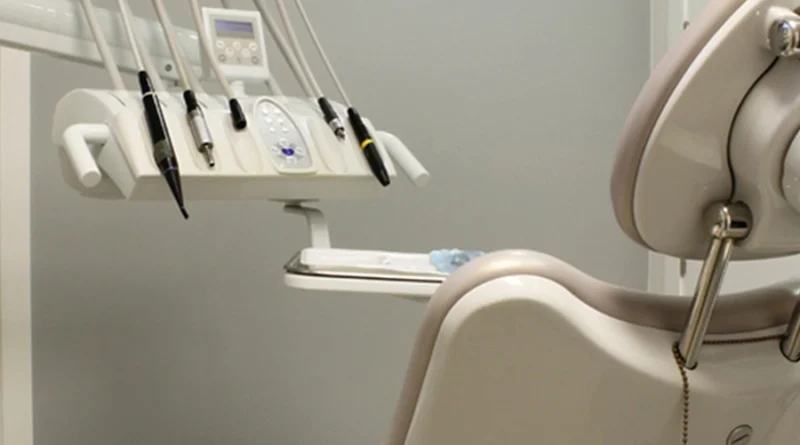10 Essential Skills Needed Before Starting Dental Implant Training
Dental implantology is a rapidly growing field that offers life-changing solutions for patients with missing teeth. However, before diving into dental implant training, it’s essential to have a strong foundation of skills to ensure a smooth learning experience. Whether you’re a general dentist or a specialist looking to expand your expertise, mastering these essential skills will set you up for success.
Strong Understanding of Oral Anatomy
A strong grasp of oral anatomy is fundamental before starting a dental implant course. Without a deep understanding of the jawbone, nerves, sinus cavities, and soft tissue structures, implant placement can become a high-risk procedure with complications such as nerve damage, sinus perforation, and implant failure.
Key Structures Every Implantologist Must Know
1. Maxilla and Mandible (Jawbone Structure)
- The maxilla (upper jaw) is more porous, which affects implant stability and may require bone grafting for support.
- The mandible (lower jaw) is denser but houses the inferior alveolar nerve, making nerve damage a major concern.
2. Nerve Pathways and Their Importance
- Inferior alveolar nerve (IAN): Injury can cause permanent numbness in the lower lip and chin.
- Mental nerve: Located near premolars, improper implant placement here can lead to prolonged pain or sensory changes.
3. Sinus Cavities and Implant Considerations
- In the posterior maxilla, implantologists must assess sinus floor elevation before placement to prevent perforation and sinus infections.
Mastery of Basic Dental Procedures
Before enrolling in a dental implant course, it’s essential to have a strong foundation in basic dental procedures.
Essential Procedures Every Implant Dentist Must Master
1. Tooth Extractions: A Prerequisite for Implantology
Many implant cases start with tooth removal, making extractions one of the most critical skills to refine. Poor extraction technique can lead to bone loss, sinus exposure, or soft tissue trauma, all of which complicate implant placement.
- Atraumatic extraction techniques help preserve the alveolar bone.
- Luxators and periotomes are preferred over forceps for reducing trauma.
- Immediate implant placement requires special handling to maintain socket integrity.
2. Suturing Techniques for Optimal Healing
A well-placed suture can protect the surgical site, reduce post-op complications, and promote faster healing. Implant dentists must be comfortable with:
- Simple interrupted and continuous sutures for primary closure.
- Figure-eight sutures for stabilizing socket grafts.
- Horizontal mattress sutures to reduce tension in flap surgeries.
3. Crown and Bridge Placements: Understanding Occlusion
Implants must integrate seamlessly into a patient’s bite. If the occlusion isn’t balanced, excessive forces can cause:
- Implant failure due to overload
- Fractured prosthetics or loosening of abutments
- Bone loss around the implant
A deep understanding of crown and bridge fabrication, occlusal forces, and prosthetic workflows will make the transition into implant-supported restorations much smoother.
Knowledge of Bone Physiology and Healing
Understanding bone physiology and healing is crucial before starting a dental implant course. Since implants rely on osseointegration—where the titanium post fuses with the bone—poor bone health can lead to implant failure, infection, or prolonged healing times. Knowing how bone reacts to surgery helps predict outcomes and plan for success.
The Role of Bone in Dental Implants
Bone isn’t just a static structure—it’s a dynamic, living tissue that constantly remodels. Key factors affecting bone health in implantology include:
- Bone density: Denser bone (D1/D2) supports implants better, while softer bone (D3/D4) may need reinforcement.
- Blood supply: Good vascularization ensures proper healing and osseointegration.
- Bone remodeling: After implant placement, osteoblasts and osteoclasts work together to integrate the implant into the jaw.
Understanding Osseointegration and Bone Grafting
- Osseointegration: Titanium implants must achieve direct bone contact for long-term stability. Smoking, diabetes, and osteoporosis can slow this process.
- Bone grafting: When there’s insufficient bone volume, grafting with autografts, allografts, xenografts, or synthetic materials ensures a solid foundation for implants.
Proficiency in Radiographic Interpretation
Before starting a dental implant course, developing strong radiographic interpretation skills is non-negotiable. Implant success depends on precise imaging analysis—without it, critical errors like poor implant angulation, nerve damage, or sinus perforation can occur.
Types of Imaging Used in Implantology
A thorough understanding of different radiographic techniques is essential for treatment planning:
- Panoramic X-rays (OPG): Useful for initial assessments, showing jaw structure, available bone, and potential pathology.
- Periapical X-rays: Provide detailed views of localized bone levels but lack depth perception for implants.
- CBCT (Cone Beam Computed Tomography): The gold standard for implant planning, offering 3D visualization of bone volume, nerve positioning, and sinus anatomy.
Key Factors to Assess in Implant Planning
- Bone Density & Volume: Determines whether additional bone grafting or sinus lifting is required.
- Nerve & Sinus Positioning: Avoids inferior alveolar nerve damage or maxillary sinus perforation.
- Pathological Findings: Identifying cysts, infections, or bone defects that could compromise implant stability.
Hand-Eye Coordination and Precision
Precision isn’t just a skill in implantology—it’s a necessity. Every step of implant placement, from incision to drilling and final restoration, demands exceptional hand-eye coordination. Without it, even the most well-planned procedure can result in misaligned implants, nerve damage, or prosthetic failure.
Why Dexterity Matters in Implant Dentistry
A successful implant must be positioned within fractions of a millimeter to ensure proper integration and long-term function. Even a slight misalignment can lead to:
- Occlusal imbalances, causing excessive force on the implant.
- Perforation of critical structures, such as the sinus floor or mandibular canal.
- Soft tissue trauma, increasing post-operative complications.
Exercises to Improve Precision and Coordination
Before enrolling in a dental implant course, refining motor skills can make procedures smoother and more predictable. Try:
- Microsurgical training: Practicing fine suturing techniques on small-scale models.
- Hand stability drills: Using forceps to pick up and place tiny objects with precision.
- Simulated implant placements: Working on typodont models or cadaver-based training to mimic real-life conditions.
Understanding of Prosthodontics and Occlusion
Before enrolling in a dental implant course, understanding prosthodontics and occlusion is essential for long-term implant success. A poorly designed implant restoration can lead to premature failure, discomfort, or bite misalignment, making knowledge of occlusal dynamics and prosthetic integration a critical skill.
How Implants Fit Into Restorative Dentistry
Unlike natural teeth, implants lack the periodontal ligament (PDL), which means they don’t have the same proprioception or shock absorption. This makes occlusal load distribution a major concern. Key considerations include:
- Correct implant positioning to ensure even force distribution.
- Prosthetic design that mimics natural teeth in function and aesthetics.
- Material selection to prevent excessive wear on opposing dentition.
Common Occlusal Considerations in Implant Cases
Achieving a harmonious bite requires precise occlusal adjustments:
- Avoiding excessive lateral forces, as implants lack mobility.
- Ensuring canine guidance instead of group function for reduced stress.
- Managing occlusal interferences to prevent overload and implant fracture.
Knowledge of Infection Control and Sterilization
Before starting a dental implant course, a solid grasp of infection control and sterilization is essential. Implant procedures involve direct surgical access to bone, making them highly susceptible to bacterial contamination. Any lapse in infection control can lead to peri-implantitis, delayed healing, or complete implant failure.
Importance of Aseptic Techniques
Strict aseptic protocols are critical in implant dentistry. Unlike routine dental procedures, implant surgery requires an operating-room level of sterility to prevent cross-contamination. Key principles include:
- Sterile instrument handling to eliminate microbial exposure.
- Barrier protection (gloves, gowns, and drapes) to minimize contamination.
- Surface disinfection of the operatory before and after procedures.
Common Infection Control Mistakes to Avoid
Even minor oversights can increase infection risks. Be mindful of:
- Improper sterilization of implant drills and surgical kits. Always follow autoclave protocols to ensure complete decontamination.
- Touching non-sterile surfaces during surgery. Every contact increases the chance of contamination.
Effective Communication and Patient Management Skills
Before starting a dental implant course, developing strong communication and patient management skills is just as important as mastering surgical techniques.
Handling Patient Concerns and Expectations
Many patients are nervous about dental implants, especially due to cost, pain, and success rates. A skilled implantologist must be able to:
- Clearly explain treatment options and benefits without overwhelming patients with jargon.
- Address fears about pain and complications by outlining the procedure and recovery in simple terms.
- Set realistic expectations about healing time, potential risks, and long-term maintenance.
How to Explain Treatment Plans Effectively
Patients need clear, structured information to make informed decisions. Best practices include:
- Using visual aids like 3D scans, models, and digital treatment simulations.
- Breaking complex concepts into simple terms while ensuring accuracy.
- Encouraging questions to build trust and transparency.
Critical Thinking and Problem-Solving Abilities
Successful implantologists don’t just follow protocols—they think on their feet. A dental implant course provides structured learning, but real-world cases often come with unexpected challenges. Critical thinking and problem-solving skills allow dentists to adapt treatment plans, manage complications, and make informed decisions that lead to better patient outcomes.
Managing Implant Complications
Even with careful planning, issues like poor primary stability, unexpected bone loss, or soft tissue complications can arise. A skilled clinician must:
- Diagnose problems early using clinical signs and radiographs.
- Adjust surgical techniques if bone density is lower than expected.
- Manage soft tissue issues by modifying flap design or using grafting materials.
Case Planning and Decision-Making
Every patient presents a unique anatomical and medical profile, requiring personalized treatment plans. Strong problem-solving skills help dentists:
- Determine the best implant size and placement based on bone volume and occlusion.
- Decide when additional procedures (bone grafting, sinus lifts) are necessary.
- Adapt to intraoperative surprises like unexpected anatomical variations.
Conclusion
Dental implant training can be a game-changer for your career, but it requires a solid foundation of skills. By mastering these ten essential abilities, you’ll be better prepared to tackle the challenges of implantology and provide excellent care for your patients.
Invest in your education, practice diligently, and stay committed to improving your craft—your future patients will thank you for it!
Image by Rubén González from Pixabay
This article was originally published here:
Source link




